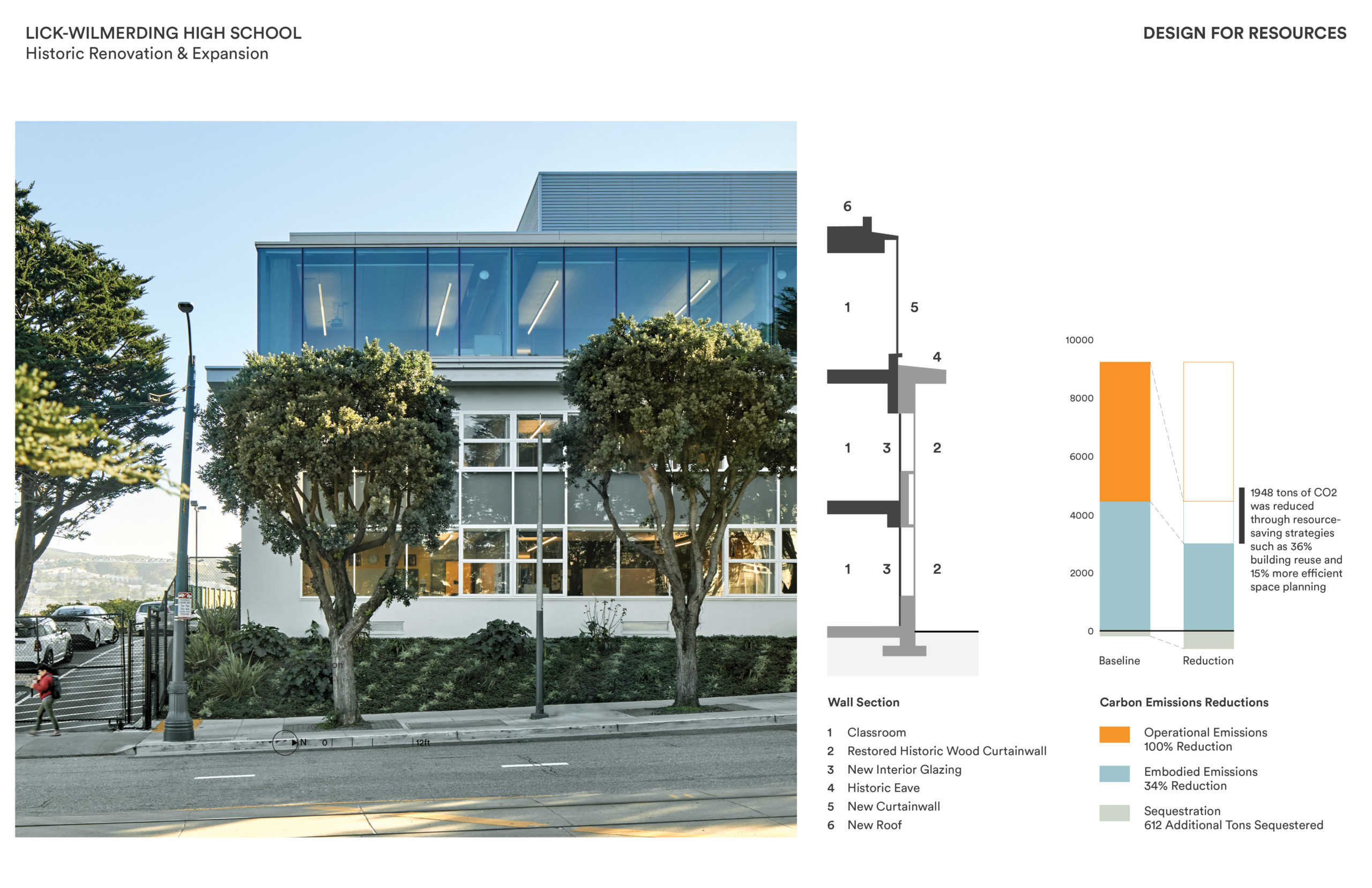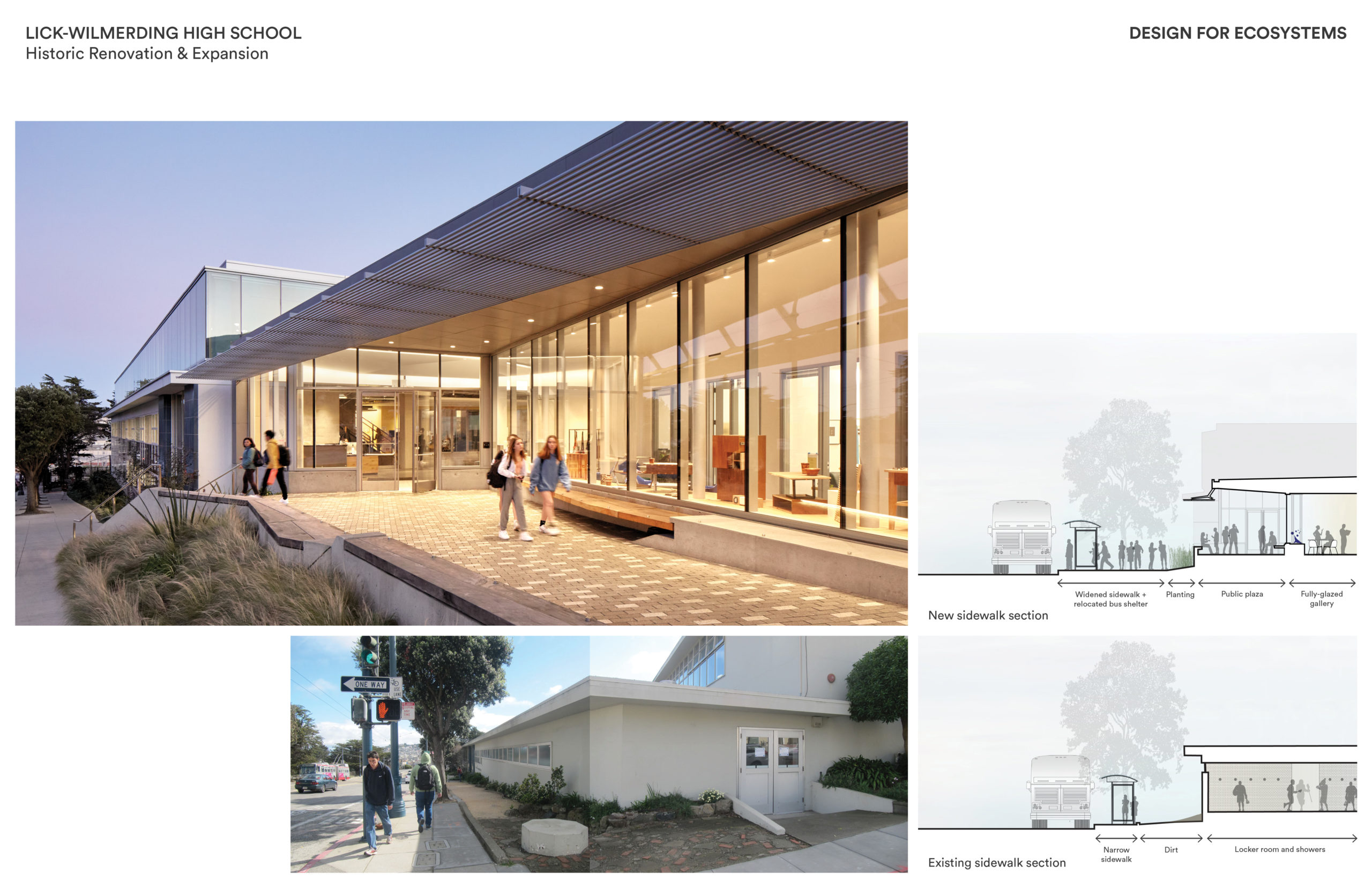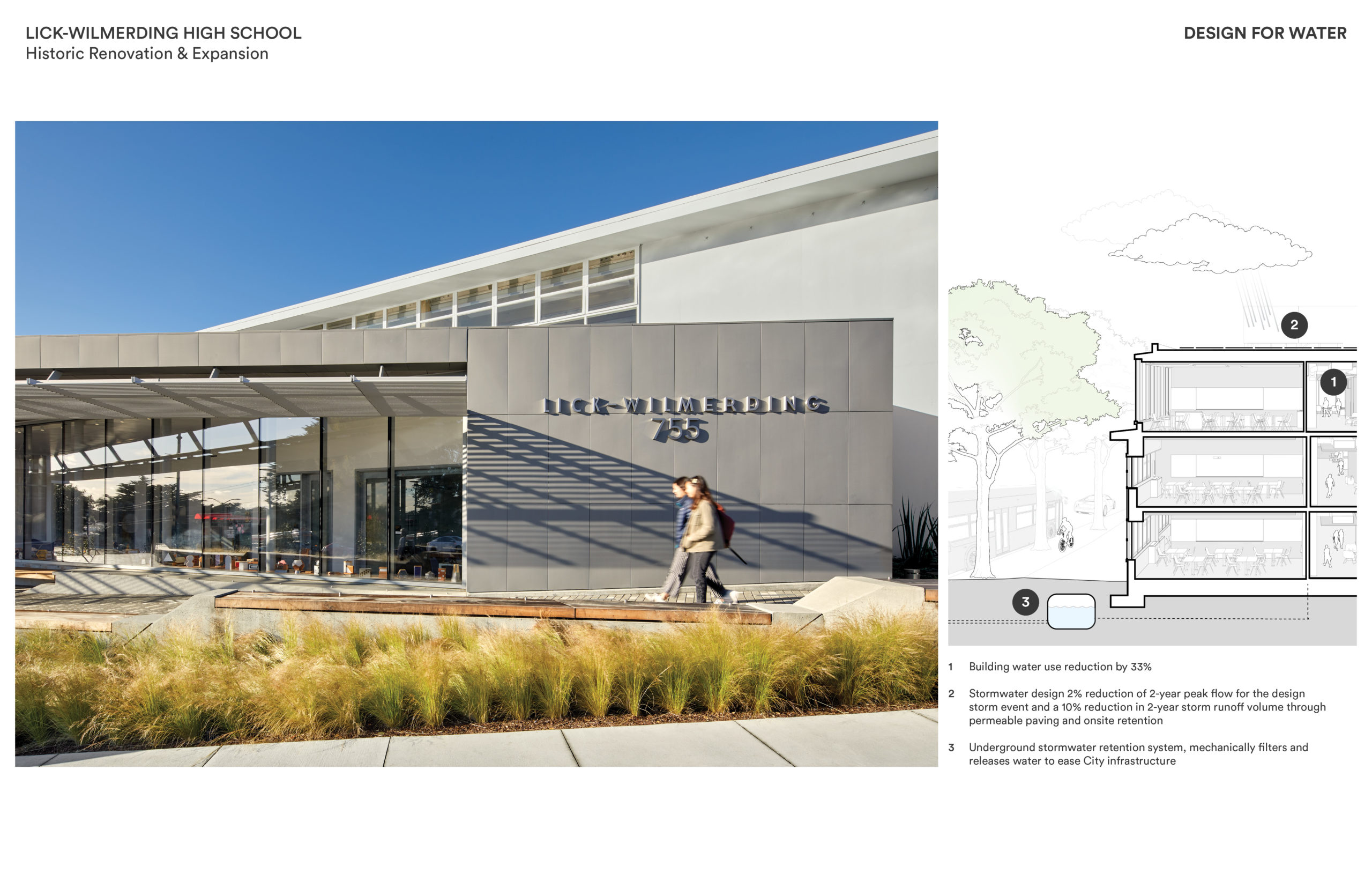
In January, the White House launched the National Building Performance Standards Coalition, a groundbreaking initiative to increase energy efficiency in existing buildings and improve communities.
“New federal actions today, in tandem with close state and local coordination, will accelerate progress towards reducing buildings emissions at all levels of government,” read a White House statement announcing the initiative. “When building performance standards are designed in partnership with frontline communities and key stakeholders, innovative and equitable solutions can address multiple needs in a community.”
The coalition represents an important move forward for sustainable design, one that will help architects and civic leaders hasten the fight against climate change and enhance communities with new jobs and resources. For years, the success of sustainable design was measured by efficiency: Reducing energy consumption through insulation and high-efficiency windows, for example. The new performance standards, however, are flexible and allow communities to set appropriate, targeted requirements for a broad range of criteria, including energy use, water use, and emissions, as well as to align with programs that promote equity and health in underserved communities.
The coalition will make energy- and carbon-efficient design more common. And because the standards are aimed at existing buildings, they’ll enable communities to achieve targets in stages, reducing embodied carbon that is released during new builds while also helping the United States achieve its goal of cutting national emissions in half by 2030.
“Our understanding of sustainable design has evolved tremendously over the past decade,” says Lori Ferriss, AIA, the director of sustainability and climate action at Goody Clancy in Boston. “We now consider embodied-emissions mitigation, social-equity impacts of green design, and how buildings adapt to climate change. These new standards support coordination and growth among state and local governments to improve policy. Going forward, it’s the work of the architect to implement these requirements in a way that creates equitable, beautiful, resilient spaces.”
Reviving a historic school for the future
Buildings contribute nearly 40% of all fossil fuel carbon-dioxide emissions (CO2), and nations around the world are on schedule to double the current building stock by 2060. To ensure they meet zero-carbon standards, architects need to improve and reuse existing structures. The coalition will help them do that.
For starters, the coalition moves the needle on sustainability in a real way. Comprising 33 state and local governments (including Atlanta, Boston, Chicago, Los Angeles, and Washington state), it represents over 22% of the U.S. population, with municipalities aiming to enact the regulations by Earth Day 2024. To support coalition participants, federal agencies like the U.S. Department of Energy and Environmental Protection Agency are offering technical assistance and funding for retrofit activities, while labor organizations are giving resources for workforce engagement and equity strategies.
By raising the baseline, building standards performance programs will spur broader acceptance of sustainable design for all projects—leading to more buildings like Lick-Wilmerding High School in San Francisco, one of the 2022 COTE Top Ten Award winners for sustainable design excellence.
A private school committed to diverse enrollment and focused on industrial design, Lick-Wilmerding wanted to renovate and expand its campus in a way that reflected its values of community engagement and net-zero design. So architect SiJing Sanchez, AIA, a project manager at EHDD in San Francisco, used this goal as a guiding principle for the project.
“The biggest way we’re reducing our carbon impact is by reusing existing structure,” she says. “We did various carbon assessments, and they all said the same thing: The less you build from scratch, the better.”
Sanchez and her team retained the main part of the classroom building along with the historic facade. Working with the existing footprint, they replaced mechanical systems and updated ceiling layouts to create a greater sense of space, chose compact furniture that offered utility without taking up a lot of room, and gauged embodied carbon of new materials they used. Ultimately, EHDD settled on modular classrooms arranged in grids that could be adjusted as needed, creating a flexible foundation for future architects to adapt as needed over the next 50 years.
“The main idea was to reuse what we had while planning for the future,” Sanchez says.
Designing better space for nonprofits
Next, Sanchez and her team addressed another core value of Lick-Wilmerding: Community service.
During their time at the high school, all students work on public-service projects in the Center for Civic Engagement, a hub that was tucked away down a series of corridors. To make this space easier to access, Sanchez moved the Center to the school’s lobby—elevating its presence and message.
“Now it’s the first thing you see when you walk in the front door,” she says. “I think that helps amplify who they are.”
Looking beyond the campus, Sanchez wanted to create dialogue between the students and the surrounding community. For instance, local nonprofits had long used school spaces for events, but they weren’t easy to access. So Sanchez and her team held various forums to give the community a voice in the design process. As a result, the architects repositioned the campus entry on a street corner—creating easier access to better spaces for events going forward.
“The equity piece of the project is really about improving the public realm,” Sanchez says. “Inviting the public in to create a better experience.”
Inside a 2022 COTE Top Ten Award winner
The Lick-Wilmerding High School shows the type of project the National Building Performance Standards Coalition can help spur across the U.S.
- Design for Resources: Architects at EHDD in San Francisco were able to reduce 1,948 tons of CO2 emissions through resource-saving strategies.
- Design for Change: The redesign preserved existing design while adjusting for a flexible future.
- Design for Ecosystems: A new public plaza offered better space for local community nonprofits to host events.
- Design for Water: Building water use was reduced by 33%.
- Design for Energy: A Plug Load Analysis helped reduce energy use on the campus.
Establishing a building performance standards program in your community
Perhaps the most inspiring aspect of the coalition is that local governments can take action now. By joining the coalition, civic leaders can learn how to more holistically adopt and align building codes, performance standards, and zoning laws to improve their communities for decades to come.
“This is groundbreaking,” Ferriss says. “Until now, communities had to start from scratch when it came to legal structures for sustainable design. So creating a home for this type of collaboration, and the support to build momentum for it financially and politically, is important for having a meaningful impact for our future.”




